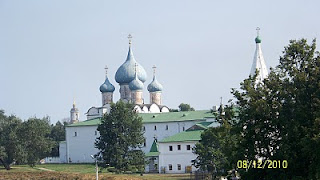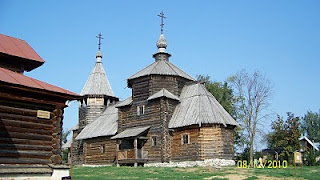

Music was everywhere in Russia. We had the great pleasure of seeing two ballet performances, and a folk music performance. Swan Lake was presented by the Russian National Ballet Company, in Moscow. It was an amazing performance. We saw Romeo and Juliet in St. Petersburg. It was a contemporary choreography. Quiet interesting with a very moving ending, but not really my cup of tea. But both the orchestra and dancers were excellent. In St. Petersburg we also saw a show called Feel Yourself Russian. I think this is designed for tourist. It was great fun, with a variety of traditional Russian music and dancing. Free vodka and champagne before the show and during intermission, too.
There was also music on the streets and at the various historic sites we visited. I've posted some of the more fun ones. The men with the horns were at Peterholf, which was the Summer Palace of the Tsars. (Where the Amber Room is located). I had never seen these before. They were amazing. When we first came upon them, they were playing Peter and the Wolf by Prokofiev. They then played several other things. It was amazing the range and tones they produced. I am sorry I did not think to video these men.
The man with the odd looking instrument was a street player in Old Arbat, the oldest part of Moscow. He made this instrument himself. Interestingly, he is pictured in the travel guide we used, Insight City Guide.
The video is a clip of folk musicians at the Museum of Wooden Architecture in Suzdal. This is an outdoor museum where a variety of historic log buildings have been moved to one locale.
More to come!




























